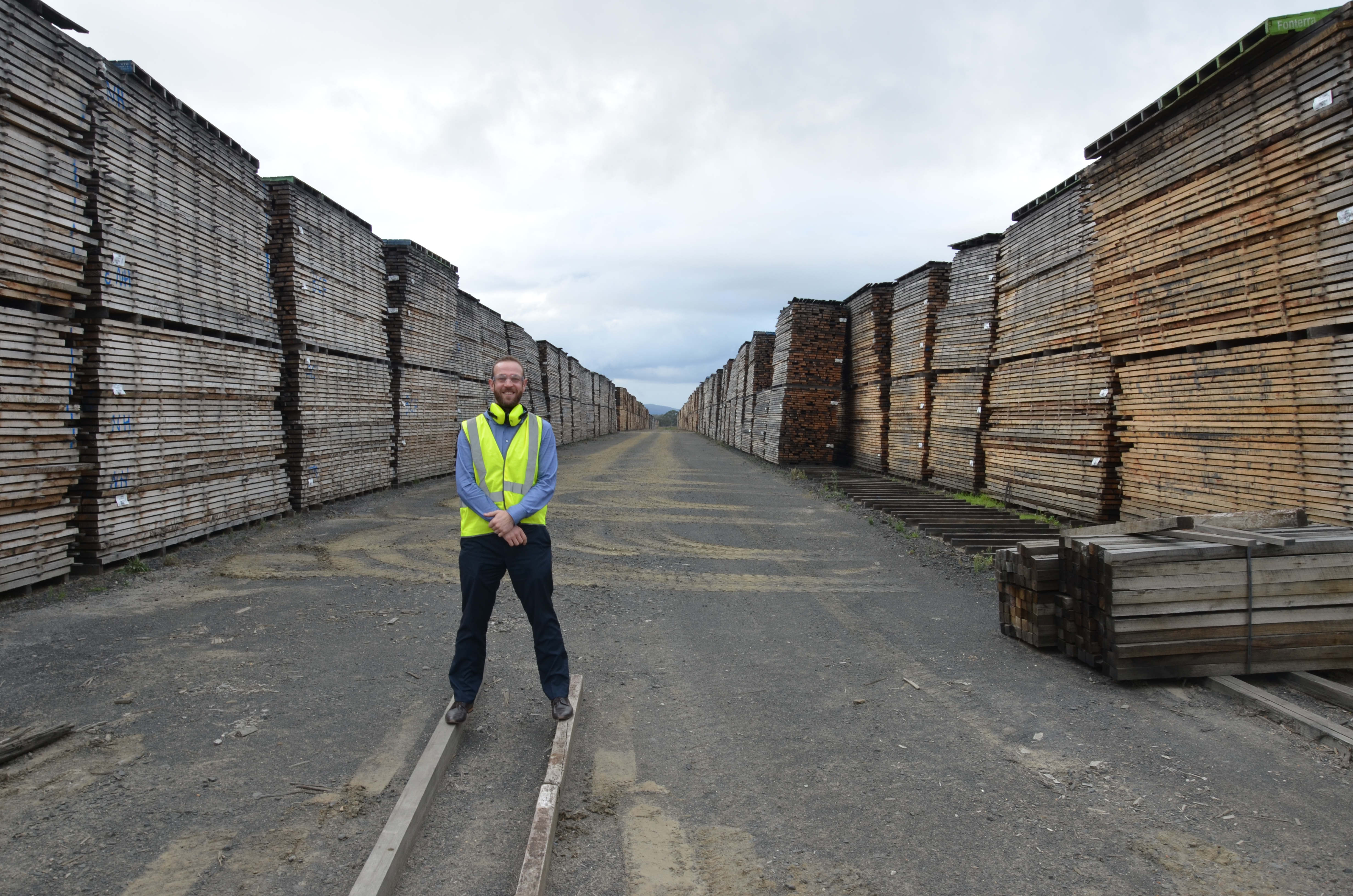Swinburne innovations are addressing the housing crisis by developing sustainable, affordable and energy efficient housing materials

Professor Blair Kuys, Swinburne School of Design and Architecture Associate Dean Research
In summary
- A new research project from Swinburne University of Technology will make Australian homes more sustainable, address rising costs of living, and reduce construction waste
- Professor Blair Kuys, Swinburne School of Design and architecture Associate Dean Research is leading the project
- Swinburne is one of six research facilities to share in $6 million funding for 8 new projects to be conducted out of the National Institute for Forest Products Innovation (NIFPI) centre
A new research project from Swinburne University of Technology will make Australian homes more sustainable, address rising costs of living, and reduce construction waste.
The ‘Research, development and validation of 8-star rated architectural products maximising the use of out-of-grade timber’ project has been awarded $751,909 in total, including industry contributions.
Professor Blair Kuys, Swinburne School of Design and architecture Associate Dean Research is leading the project and brings 20 years of experience in researching and designing architectural products.
Joining him is Swinburne Alum, Dr Nathan Kotlarewski, now at the University of Tasmania, who has specialist expertise in timber engineering.
“By combining an abundant resource with clever product design engineering, we believe we can create high-quality outputs that will be comparable in cost to less sustainable equivalents,” Professor Kuys said.
Building energy-efficient homes
As of August 2022, the Australian government requires all houses to be built with at least a 7-star energy rating.
Energy-efficient homes are better for the planet and dramatically lower running costs over the life of a house, but the policy has also contributed to rising building costs and material shortages.
This project is tackling those issues by using out-of-grade timber to design, develop and validate affordable and innovative timber products.
‘Out-of-grade’ timber is considered unsuitable for use in construction due to imperfections such as bows or knots.

Australia produces an estimated million cubic metres per year, equal to approximately 200,000 30-year-old pine trees
Most out-of-grade timber is currently being sent overseas and turned into wood chips, making its production either a cost-neutral exercise or even a profit loss.
This project will take this widely available and affordable material and use it to design practical new products to help Australian homes achieve an 8-star energy-efficient rating.
It is also minimising waste in construction by focusing on sub-assembled products that can be created off-site with advanced manufacturing processes. For example, this may include a modular insulated wall system that could then be brought onsite and easily assembled.
AKD Softwoods, HVP Plantations, Engineered Wood Products Association of Australasia and iBuyNew are all industry partners in the project and will be directly involved in manufacturing the new designs as soon as they are complete.
“This project is very practical. The money awarded will be used for research and development of tangible new products that have immediate avenues to market,” Professor Kuys said.
Swinburne is one of six research facilities to share in $6 million funding for 8 new projects to be conducted out of the National Institute for Forest Products Innovation (NIFPI) centre in Mount Gambier.
Federal Minister for Agriculture, Fisheries and Forestry, Murray Watt said the initiative will invest in our forest and wood products industries’ research and innovation capacity.
“This will support ongoing research careers in the forest and wood products sectors,” Minister Watt said.
The project will commence in 2024 and run for 2.5 years, with product innovations to be ready for use in Australian homes as early as the start of 2027.
-
Media Enquiries
Related articles
-

- University
Update on 131-133 Union Street, Windsor - December 2025
A December 2025 update from Swinburne University of Technology on the property at 131–133 Union Street, Windsor.
Monday 08 December 2025 -

- University
Swinburne launches Australian-first Undergraduate Certificate of Higher Education Studies
Swinburne has launched an Undergraduate Certificate of Higher Education, in an Australian-first that offers a new formal qualification to those who complete tertiary education but fall short of a degree.
Wednesday 10 December 2025 -

- Student News
- Science
- Sustainability
Introducing tomorrow’s global science communicators
Start Talking is Swinburne’s unique video-based public speaking competition, exclusively for undergraduate students
Monday 08 December 2025 -

- Astronomy
- Technology
- Health
- Science
- University
- Sustainability
- Engineering
Swinburne highly cited researchers reach the top in 12 fields
Ten Swinburne academics have been named on the Highly Cited Researchers 2025 list, released by Clarivate
Tuesday 02 December 2025 -

- University
Over 550 students don caps and gowns to graduate from Children’s University Swinburne
Over 550 students from 34 schools have graduated from Children’s University Swinburne, celebrating over 45,000 hours of learning beyond the classroom this year.
Wednesday 03 December 2025

